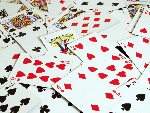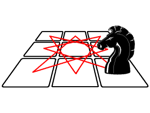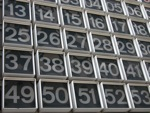 Sometimes, you run across an old idea again and again, and you don't pay much attention to it. Then, someone comes along and shows you a new application of that old principle, and it seems like something completely new!
Sometimes, you run across an old idea again and again, and you don't pay much attention to it. Then, someone comes along and shows you a new application of that old principle, and it seems like something completely new!
That's what happened to me recently, when a Magic Café user shared an idea I'm about to share with you.
The basic idea is to have someone choose a number from 1 to 100, then add that number together with the two numbers next to it. If the answer is a two- or three-digit number, then those digits are added together, and this prcoess is repeated until the answer is a one-digit number.
For example, if the total was 157, they would add 1 + 5 + 7 = 13. Since this resulted in a two-digit number, the digits in this answer would be added together again, 1 + 3 = 4. Since 4 is a one-digit number, they'd stop here.
While this seems fair, you can know, even before the number is chosen by the audience, that the total will be 6!
This idea was developed by a Magic Café user whose screen name is Pixelated. But how is this possible?
First, when you ask for a number from 1 to 100, you mention that it's going to be added together with the two numbers next to it. “Next to it” is a deliberately vague phrase that could apply to the two numbers immediately above and below their choice, the two numbers after their choice, or the two numbers before their choice. Until you know their number, you don't know which of these 3 groups you'll need to use.
Once they name a number, you have to ensure that the largest of the 3 is a multiple of 3 (naturally, you should be familiar with all the multiples of 3 from 1 to 100). Pixelated suggests having a row of 3 boxes on a board or piece of paper.
Let's say the person names the number 57. Since 57 is a multiple of 3, you would write it in the rightmost box, and then write the two previous numbers, 55 in the leftmost box, and 56 in the middle box.
What if they'd named 56? You will hopefully recognize that 56 is 1 less than a multiple of 3, so you'd write that in the middle box, so that 57 would naturally go in the rightmost box, and 55 would go in the leftmost box.
If they name 55, you should recognize it as a number that's 1 greater than a multiple of 3 (54, in this case), so you know to write it in the leftmost box, writing 56 in the middle box and 57 in the rightmost box.
Note that, even though the above represents 3 different cases, you always wound up with 55, 56, and 57 in that order. Also the reference to the “two numbers next to the chosen number” makes sense in all 3 cases.
Probably the easiest way to think about the process is to take the chosen number, and count up to the next multiple of 3, unless, of course, the chosen number is already a multiple of 3. Whatever the nearest multiple of 3 is, you think of that as a “ceiling” you cannot go beyond. If someone were to name 47 as their number, you can think: 47...48...Hey! 48 is a multiple of 3...48 has to go in the rightmost box, so 47 must go in the middle. That leaves 46 for the leftmost box.
In short, although you seem to specify how the three consecutive numbers will be chosen, it's your ability to specify the order which gives you control over the total.
Once you have the three numbers, have an audience member add them up as explained above. If the numbers are 55, 56, and 57, they'd add them together to get 168. Next, they'll add 1 + 6 + 8 to get 15, and then add 1 + 5 to get 6.
What about 46 + 47 + 48? That's 141, and 1 + 4 + 1 = 6. No matter which number is chosen, you can always make the resulting 1-digit total equal 6.
WHY DOES THIS WORK?: First, you'll need to be familiar with the concept of digital roots. Here's a quick introduction, or refresher course, on digital roots via video:
Since you're arranging the numbers so that the largest of the 3 numbers is a multiple of 3, that largest number can be written algebraically as 3x (in other words, 3 times some number). The two numbers immediately prior to it can then be described as 3x - 1 and 3x - 2. Add these three numbers together, you get 3x + 3x - 1 + 3x - 2 = 6x - 1 + 3x - 2 = 9x - 3.
As regular Grey Matters fans and mental math wizards already know, Any time you multiply a number by 9, the answer will have a digital root of 9. We can also be sure, then, that 9x - 3 means that the digital root will be equal to 9 - 3, or 6.
VARIATIONS: Using a similar approach, you could always make sure that the multiple of 3 winds up in the middle. In this case, the numbers would be 3x, 3x - 1, and 3x + 1. Added together, this comes out to simple 9x, so the total would have a digital root of 9.
You could also always ensure that the multiple of 3 is the leftmost number, making the numbers turn out to be 3x + 3x + 1 + 3x + 2 = 6x + 1 + 3x + 2 = 9x + 3. In this case, the number would have a digital root of 3.
Besides simply adding up the numbers themselves, you could also have the people add up the individual digits in each number. Going back to our previous example using 55, 56, and 57, you could have them add 5 + 5 + 5 + 6 + 5 + 7 = 15 + 6 + 5 + 7 = 21 + 5 + 7 = 26 + 7 = 33. Of course, 33 becomes 3 + 3 = 6, so it still works out to the same digital root.
THOUGHTS: The simplest presentation, of course, is to somehow show that you predicted the number 6 (or 3, or 9, depending on which approach you used). However, 6 could also mean something besides just a simple number. It might be a page, or a word on a page (the 6th word), or a time on a clock, or a month (6th month is June), or any of a million other possibilities.
As was once said about the laser, this is currently a solution looking for a problem. Somewhere out there is the perfect application for this numeric force. Try playing around with this idea, and let me know in the comments about any ideas you develop!

 I apologize for the irregular posting over the past few months. I've had to deal with some personal issues (don't worry, everything is fine!). The good news is that, with this entry, everything should start returning to normal.
I apologize for the irregular posting over the past few months. I've had to deal with some personal issues (don't worry, everything is fine!). The good news is that, with this entry, everything should start returning to normal.


 I recently ran across a number of videos I figured would be interesting to regular Grey Matters readers, so I thought I would share them.
I recently ran across a number of videos I figured would be interesting to regular Grey Matters readers, so I thought I would share them.
 Would you believe tha another of my contributions has made it on to Scam School again? It was
Would you believe tha another of my contributions has made it on to Scam School again? It was 


 June's snippets are ready!
June's snippets are ready!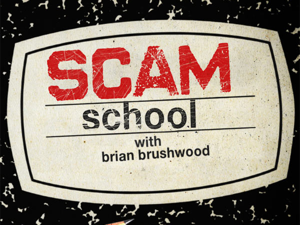
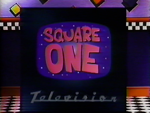 Obviously, I'm a big fan of mixing math and fun. It's time to give a little credit to one group that's responsible.
Obviously, I'm a big fan of mixing math and fun. It's time to give a little credit to one group that's responsible.